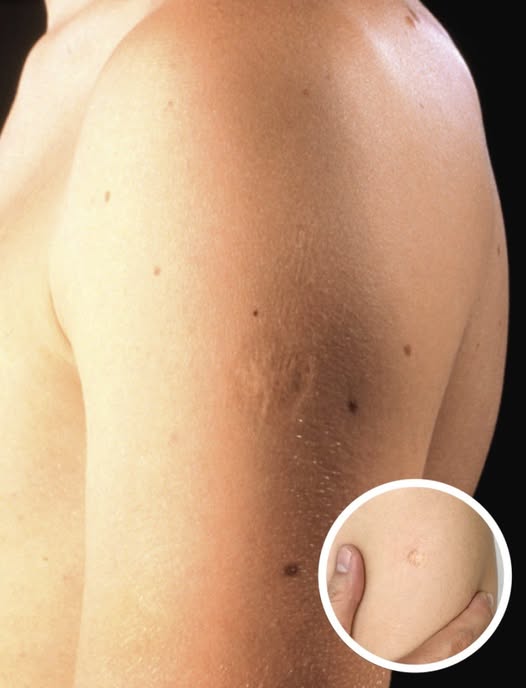Here’s the Truth Behind That Small Scar on People’s Upper Left Arm
If you’ve ever noticed a small, round scar on someone’s upper left arm — or even on your own — you’ve probably wondered where it came from. That mark isn’t from an accident or injury. It’s a trace of one of the greatest victories in medical history: the smallpox vaccine.
For centuries, smallpox was among the deadliest diseases on earth. Caused by the variola virus, it spread easily, killed roughly 30% of those infected, and left survivors scarred for life. Its symptoms — high fever, fatigue, and a blistering rash — terrified entire populations. Epidemics swept across countries, leaving devastation in their wake.
Everything changed when scientists developed a vaccine using a live but harmless relative of the virus, called vaccinia. It didn’t cause smallpox, but it trained the immune system to recognize and fight it. This medical breakthrough became one of humanity’s most successful weapons against disease.
By the early 20th century, mass vaccination campaigns had begun. The process, however, was far from the quick and painless injections we know today. Doctors used a bifurcated needle — a small, forked instrument dipped into the vaccine fluid. Instead of a single jab, they pressed it into the skin multiple times in rapid succession, usually on the upper left arm.
The site would soon redden, swell, and form a blister. Over the next few days, that blister scabbed over, often becoming sore and itchy. Once it healed, it left behind a distinct circular scar — usually smaller than a pencil eraser, sometimes raised or indented depending on how the skin reacted. That mark was proof that the vaccine had worked.
It also became a universal identifier. For decades, the smallpox scar was so common that people associated it with responsibility and good health — a visible sign that you had done your part to protect yourself and others.
By the 1950s, vaccination had become so widespread that smallpox cases plummeted. The last natural case in the United States occurred in 1949. Thanks to a global eradication effort led by the World Health Organization, the disease was declared eradicated in 1980 — the first time in history a virus was wiped from existence.
After that, routine smallpox vaccination stopped. In the U.S., it officially ended in 1972. Today, only certain lab workers or military personnel handling potential viral samples still receive the vaccine.
For those who were vaccinated decades ago, that little scar is more than a blemish — it’s a piece of history. It represents a time when medical science united the world in a common cause and succeeded.
The scar itself varies from person to person. Some people’s immune systems reacted strongly, creating larger or more textured marks, while others were left with faint, smooth dots. A few even developed mild side effects at the time — fever, fatigue, or swollen lymph nodes. Serious reactions were extremely rare but documented in those with weakened immune systems or skin conditions like eczema.
Since routine vaccination ended, younger generations no longer carry the mark. Those small, round scars now belong mostly to people born before the mid-1970s — a fading visual link to a global campaign that changed the course of human health.
For anyone bothered by the cosmetic appearance of the scar, modern dermatology offers several options: topical ointments, laser treatments, or dermabrasion can reduce its visibility. But many choose to keep it as a badge of resilience, a reminder that humanity has already proven capable of defeating one of its most ruthless enemies.
In the end, that tiny mark isn’t just a scar — it’s a symbol of triumph. It tells a story of courage, science, and the collective will to survive. The next time you notice it on someone’s arm, remember: that little circle represents a victory that saved millions of lives and reshaped the future of medicine.

